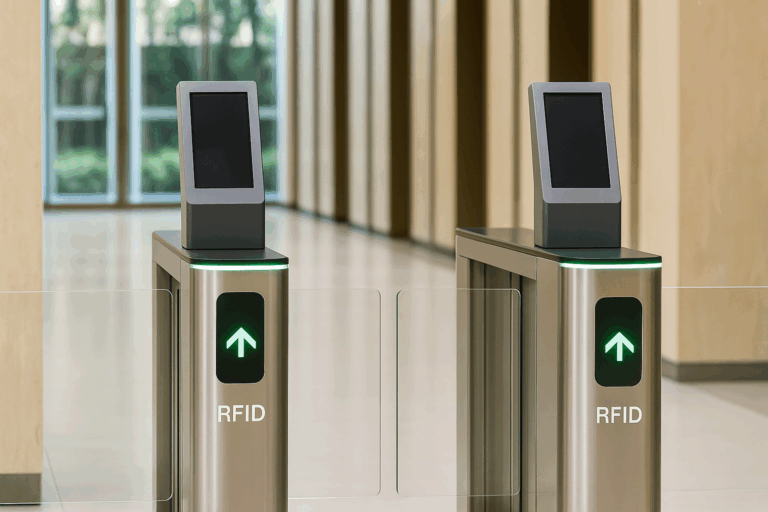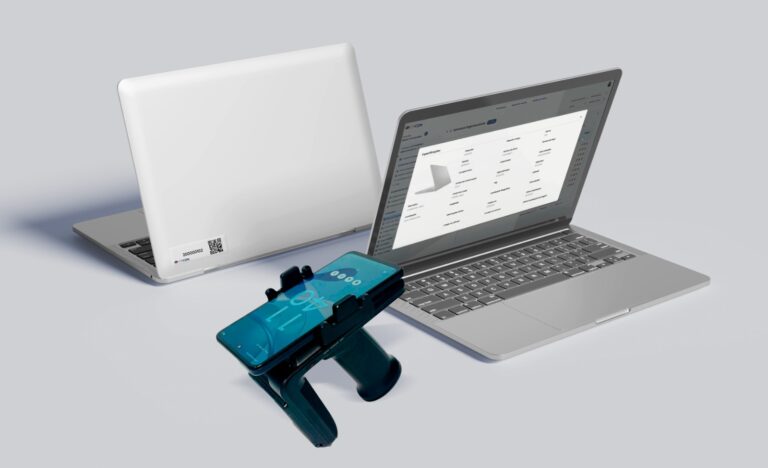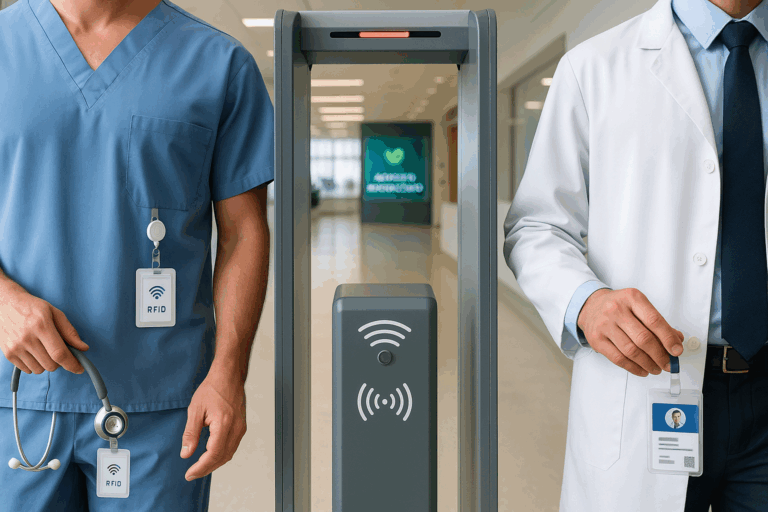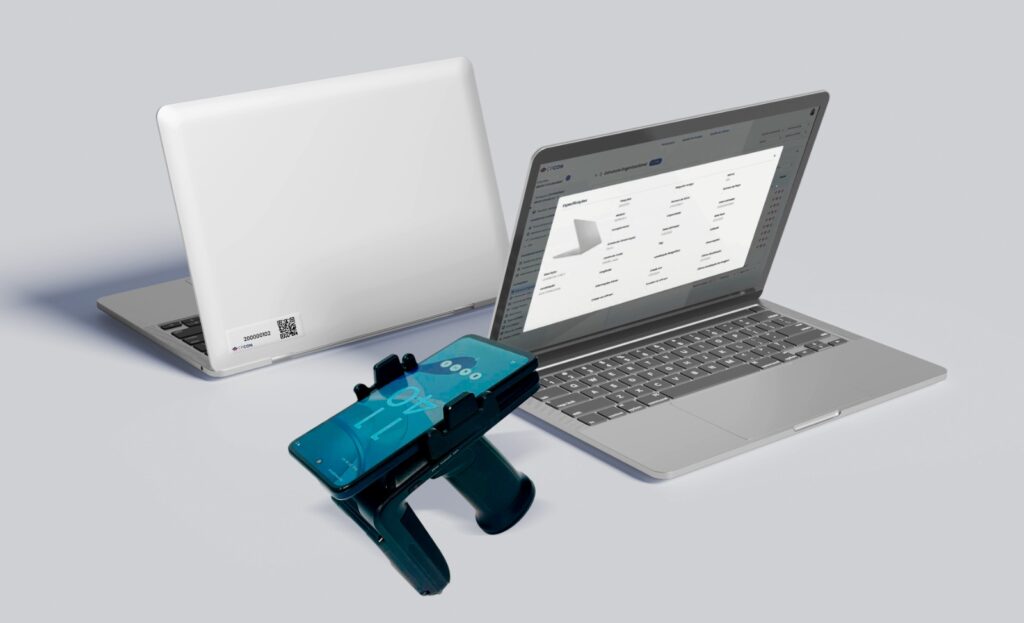Hospital asset management is the strategic process of tracking, maintaining, and optimizing all medical equipment, infrastructure, and resources that keep a healthcare facility running. From MRI scanners and ventilators to surgical tools and IT systems, these assets are the backbone of hospital operations.
Without effective hospital asset management, equipment downtime, compliance failures, and unnecessary costs become inevitable — directly affecting patient safety, staff productivity, and financial performance. By combining technology, preventive maintenance, and data-driven decision-making, hospitals can ensure that every asset is available, reliable, and contributing to better care outcomes.

Table of Contents
ToggleWhat is Hospital Asset Management?
Hospital asset management is the coordinated process of monitoring, maintaining, and optimizing every piece of equipment, device, and physical infrastructure that supports healthcare delivery. It is not just an administrative task — it is a critical function that impacts patient safety, clinical efficiency, and regulatory compliance.
In the United States, hospitals operate with a wide range of assets: advanced imaging machines such as MRI and CT scanners, life-support devices like ventilators, surgical instruments, infusion pumps, and even non-medical items such as beds, wheelchairs, and IT servers. Each of these assets has a defined life cycle, maintenance schedule, and compliance requirement. For example, The Joint Commission — a key healthcare accreditation body in the U.S. — requires hospitals to prove that critical equipment is properly maintained and documented to ensure patient safety.
An effective hospital asset management program addresses three key questions at all times:
- Where is each asset located?
- What is its operational condition?
- When will it need maintenance, calibration, or replacement?
By answering these questions with precision, hospital administrators can prevent costly downtime, reduce the risk of medical errors, and improve the quality of care. For example, a large hospital in New York that implemented an RFID-based asset tracking system reduced equipment search time in its emergency department by 50%, allowing staff to focus on urgent patient needs instead of locating missing devices.
In practice, hospital asset management goes beyond keeping an updated inventory. It integrates technology, predictive maintenance, and data analysis to make strategic decisions. This means not only ensuring that equipment is working today but also anticipating when it will need service, replacement, or upgrades — a proactive approach that saves costs and avoids last-minute crises.
Why is Hospital Asset Management Important?
In healthcare, the availability and reliability of medical equipment can be the difference between a timely treatment and a critical delay. Hospital asset management plays a central role in ensuring that every piece of equipment, from surgical kits to life-support machines, is ready for use when needed. It is the foundation for operational efficiency, patient safety, and cost control.
In the U.S., hospitals face unique pressures that make asset management essential. Rising operational costs, strict regulations such as those enforced by the Centers for Medicare & Medicaid Services (CMS), and the constant need to adopt new medical technologies mean that resources must be managed with precision. An MRI scanner, for instance, represents a multi-million-dollar investment and requires regular calibration to deliver accurate results. Without a structured asset management program, missed maintenance could lead to service interruptions, patient rescheduling, and even legal liabilities.
The benefits of hospital asset management extend far beyond keeping a clean inventory list:
- Improved patient safety: Ensuring equipment is functioning correctly reduces the risk of diagnostic errors or treatment delays.
- Regulatory compliance: Accurate records help meet the requirements of accrediting bodies like The Joint Commission, avoiding costly penalties.
- Cost optimization: By preventing unnecessary purchases and extending the lifespan of existing assets, hospitals can allocate budgets more effectively.
- Operational efficiency: Staff spend less time searching for equipment and more time focusing on patient care.
- Data-driven decision-making: Performance analytics identify underutilized equipment, guide replacement schedules, and improve capital planning.
Core Practices for Effective Hospital Asset Management
Effective hospital asset management is built on structured, measurable, and technology-driven practices. Each step is designed to ensure assets are fully operational, compliant with regulations, and aligned with the hospital’s strategic goals.
1. Complete and Accurate Asset Inventory
A reliable asset database is the foundation. It must detail location, usage frequency, maintenance history, and regulatory requirements for each item. In U.S. hospitals, this includes everything from defibrillators and ventilators to sterilization equipment and IT servers.
2. Preventive Maintenance Scheduling
Instead of waiting for failures, equipment is serviced at set intervals based on manufacturer guidelines, usage patterns, and historical performance data. This approach prevents downtime and extends the lifespan of high-value assets like CT scanners or anesthesia machines.
3. Integration of RFID and IoT Tracking
RFID tags and IoT sensors enable real-time visibility of assets across departments. This eliminates manual searches, reduces misplaced equipment, and ensures critical devices are available when needed, particularly in emergency care units.
4. Data-Driven Utilization Analysis
Utilization metrics reveal which assets are overused, underused, or idle. For example, analyzing infusion pump usage across a hospital network may identify opportunities to redistribute equipment instead of purchasing more.
5. Compliance and Audit Readiness
Hospitals must prove that equipment is maintained and safe. Automated logs, calibration records, and inspection certificates make audits from The Joint Commission or state health departments straightforward and stress-free.
6. Staff Training and Engagement
Even the most advanced system fails without informed users. Training ensures that clinical and technical teams understand how to locate, handle, and report asset conditions, creating a culture of accountability.
7. Strategic Replacement Planning
End-of-life tracking allows hospitals to plan capital expenditures in advance, negotiate better supplier terms, and avoid sudden large-scale replacements that strain budgets.
Common Challenges and How to Overcome Them
Implementing an effective hospital asset management program is not without obstacles. These challenges often stem from a combination of operational complexity, budget constraints, and cultural resistance within the organization. Addressing them requires a clear strategy and the right technological tools.
1. Limited Budget for Technology Investments
Hospitals often prioritize direct patient care expenses over infrastructure upgrades. As a result, essential asset tracking technologies may be delayed. Overcoming this requires demonstrating the long-term cost savings of preventive maintenance and reduced equipment loss compared to the upfront investment.
2. Integration with Legacy Systems
Many healthcare facilities operate on outdated or fragmented IT platforms. Connecting these systems with modern RFID or IoT solutions can be challenging. A phased integration plan, starting with high-impact departments like the emergency room or surgical units, helps minimize disruption.
3. Lack of Real-Time Visibility
Without automated tracking, staff may spend valuable time locating equipment. Deploying RFID-enabled location tracking ensures that critical devices are available where and when they are needed, reducing operational delays.
4. Compliance and Regulatory Pressures
Hospitals must maintain accurate records to meet requirements from organizations like The Joint Commission or state health departments. Automating maintenance logs and calibration records simplifies compliance and audit preparation.
5. Staff Adoption and Training
Even the best systems fail without user engagement. Ongoing training and clear protocols ensure that teams understand how to use asset management tools effectively and consistently.
6. Data Overload without Actionable Insights
Collecting data is not enough — it must be analyzed and translated into decisions. AI-powered analytics can highlight underutilized assets, forecast replacement needs, and recommend reallocation strategies.
Strategic Benefits for Healthcare Institutions
Hospitals that adopt structured and technology-driven asset management programs gain advantages that extend far beyond equipment tracking. The impact is felt across financial performance, regulatory compliance, patient satisfaction, and operational resilience.
1. Cost Reduction and Budget Optimization
By preventing unnecessary purchases, extending asset lifecycles, and improving utilization rates, hospitals can redirect funds to critical areas such as staffing, patient care programs, or new medical technologies.
2. Improved Patient Safety and Quality of Care
Properly maintained equipment reduces the risk of failures during critical procedures, ensuring accurate diagnostics and uninterrupted treatments. This reliability is essential in high-dependency areas like intensive care units and operating rooms.
3. Regulatory Compliance with Reduced Administrative Burden
Automated tracking and maintenance records simplify inspections from accrediting bodies like The Joint Commission and state health agencies. This eliminates last-minute document searches and minimizes the risk of penalties.
4. Higher Staff Productivity
Real-time asset location reduces time spent searching for devices, allowing clinical teams to focus on patient care. This also minimizes delays in treatment, improving hospital throughput and patient flow.
5. Strategic Capital Planning
Data from asset management systems supports evidence-based decisions on equipment replacement, upgrades, and redistribution. This prevents unplanned expenses and allows hospitals to negotiate better terms with suppliers.
6. Enhanced Operational Resilience
Hospitals equipped with accurate asset data can respond faster to emergencies, adjust resource allocation during demand surges, and maintain continuity of care even under operational stress.
How CPCON Transforms Hospital Asset Management
Implementing an effective hospital asset management program requires more than technology — it demands a partner who understands the complexity of healthcare operations and can align solutions to both clinical and administrative needs. That is where CPCON stands out.
1. Real-Time Asset Traceability
2. AI-Driven Insights for Smarter Decisions
3. Workflow Standardization and Compliance Readiness
4. Scalable Solutions for Institutions of All Sizes
5. Comprehensive Onboarding and Training
Talk to our experts and discover how CPCON can help your company.
Conclusion
Hospital asset management is more than an operational necessity — it is a strategic pillar for delivering safe, efficient, and cost-effective healthcare. By ensuring that every piece of equipment is tracked, maintained, and optimized, hospitals can improve patient outcomes, strengthen compliance, and achieve greater financial stability.
FAQ
1. What is hospital asset management and why is it essential?
Hospital asset management is the process of tracking, maintaining, and optimizing all medical equipment and infrastructure in a healthcare facility. It ensures patient safety, improves operational efficiency, and supports regulatory compliance.
2. How does RFID improve hospital asset management?
RFID technology provides real-time location and usage data for medical equipment, reducing search times, preventing losses, and ensuring critical devices are always available when needed.
3. What role does preventive maintenance play in asset management?
Preventive maintenance extends the lifespan of equipment, reduces downtime, and ensures compliance with safety standards, particularly for high-value and life-support devices.
4. How can hospital asset management help reduce operational costs?
By optimizing asset utilization, preventing unnecessary purchases, and extending equipment life, hospitals can reduce capital expenditures and allocate budgets more effectively.
Get to Know CPCON Group: A global expert in asset management and inventory solutions
CPCON Group is a global leader in asset management, fixed asset control, and RFID technology. With over 25 years of experience, we have supported major companies such as Nestlé, Pfizer, Scania, BASF, Coca-Cola Andina, Vale, Vivo, Petrobras, and Caixa in high-complexity projects.
Curious about our global footprint? We are present in:
- North America: Toronto, New York, Miami, Minneapolis, Seattle, Dallas
- Latin America: São Paulo, Buenos Aires, Lima, Bogotá, Mexico City
- Europe: Lisbon, Porto, London, Birmingham, Milan, Rome, Turin, Madrid, Bilbao
- Middle East: Dubai, Saudi Arabi
- Caribbean: Tortola, Grand Cayman
Follow our LinkedIn Showcase Page and stay updated with strategic content on asset control, inventory management, and RFID innovation across industries.
Hospital asset management involves tracking, maintaining, and optimizing medical equipment and infrastructure to ensure safety, efficiency, and cost control. Using tools like RFID and AI, hospitals can gain real-time visibility, improve asset utilization, meet compliance standards, and reduce expenses. CPCON provides complete asset intelligence solutions, integrating technology, analytics, and training to help healthcare institutions operate with maximum efficiency and reliability.






















